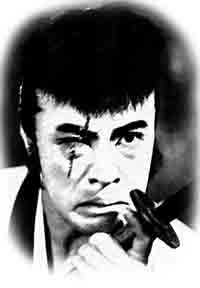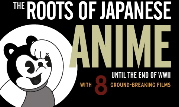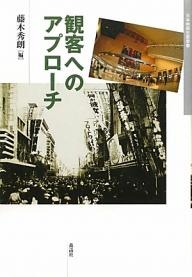This got delayed by the quake and all, but here finally is my report on the second day of Japanese filmmaker Koreeda Hirokazu's visit to Yale University at the end of February 2011. (You can read the first report here.)
I wanted to give some of our students the chance to sit down and talk freely and immediately with Koreeda in an intellectual atmosphere. Since his English is not good enough to handle such a conversation without translation, I decided to hold a workshop on Saturday the 25th that was done entirely in Japanese. Unlike the first workshop, I did not ask Koreeda to prepare anything and thus left it up to the students to lead the discussion.
The first topic was his new film Kiseki, which literally means "Miracle," but was given the English title I Wish because the international sales agent thought "Miracle" might give the mistaken impression it was a religious movie. It was in fact commissioned by one of the branches of JR, a big railroad company in Japan, to commemorate the opening of the final leg of the Kyushu Shinkansen (bullet train). The story is about two young brothers, living apart because their parents got divorced, who are convinced that seeing two shinkansen pass each other in a special way can create a miracle. Koreeda showed a long trailer the sales agent prepared for foreign distributors (Koreeda stressed that this was not his editing or music!), but you can see an early Japanese version here. The film stars the two Maeda brothers, who are famous in Japan as manzai comedians, performing under the name Maeda Maeda, but who really want to be actors some day. (Koreeda told me over dinner that he was somewhat embarrassed during the auditions because everyone in the staff knew who they were except him.) It also has such Koreeda regulars as Natsukawa Yui (whom I really like), Odagiri Jo, Abe Hiroshi, and Kiki Kirin--as well as newcomers like the granddaughter of Kiki Kirin (she's the daughter of Motoki Masahiro, of Departures fame).
fame).
About 15 attended the workshop, but it was mainly my grad students studying Japanese film who pressed him with questions. The conversations didn't always mesh, however. It was less the age-old disjunct between intellectuals and artistic practitioners, than two sides talking at cross-purposes or using different conceptual categories. People were in particular focusing on the many cinematic metaphors that appear in his films like After Life or even Air Doll
or even Air Doll (the doll could symbolize cinema because, for instance, light passes through her and she works at a video store), but as I mentioned in the first report, he strongly distinguishes himself from cinephilic filmmakers, thus from the hermeneutic, often used by both critics and film scholars, that sees movies as a self-reflexive commentary on film. Thus the air doll, to him, was primarily a metaphor for the breath of life. When pressed on the issue of what he thinks of the power and or violence of the camera, especially towards social others (a question directed, I believe, at the problem of using a Korean actress to play what is essentially a sex slave), Koreeda did not fully answer the question, but emphasized his admiration for documentarists like Tsuchimoto Noriaki and their ability to work with not against their subjects. Koreeda confessed afterwards that he found all these questions quite challenging - he had not really had to answer the question of what he thought cinema was in quite a while - but his ultimate answer in the workshop is that he thought cinema was a mode of socialization (shakaika), a means of relating elements such as characters and audiences/filmmakers. This answer can seem surprising for those who see him as an aesthetic director, but I think it is a remnant of his youthful journalistic aspirations as well as also another way he distinguishes himself from the cinephiles, who often reject subordinating film to social ends.
(the doll could symbolize cinema because, for instance, light passes through her and she works at a video store), but as I mentioned in the first report, he strongly distinguishes himself from cinephilic filmmakers, thus from the hermeneutic, often used by both critics and film scholars, that sees movies as a self-reflexive commentary on film. Thus the air doll, to him, was primarily a metaphor for the breath of life. When pressed on the issue of what he thinks of the power and or violence of the camera, especially towards social others (a question directed, I believe, at the problem of using a Korean actress to play what is essentially a sex slave), Koreeda did not fully answer the question, but emphasized his admiration for documentarists like Tsuchimoto Noriaki and their ability to work with not against their subjects. Koreeda confessed afterwards that he found all these questions quite challenging - he had not really had to answer the question of what he thought cinema was in quite a while - but his ultimate answer in the workshop is that he thought cinema was a mode of socialization (shakaika), a means of relating elements such as characters and audiences/filmmakers. This answer can seem surprising for those who see him as an aesthetic director, but I think it is a remnant of his youthful journalistic aspirations as well as also another way he distinguishes himself from the cinephiles, who often reject subordinating film to social ends.
There were many topics discussed during the workshop, but one answer I found noteworthy was the one he gave about novelizations. Koreeda, like a number of filmmakers in Japan, such as Kurosawa Kiyoshi, Kawase Naomi, and Aoyama Shinji, has penned novelizations of some of the films he has made. Some directors do it for the money and extra publicity (indie directors don't get paid much in Japan), but Aoyama won a major literary award for his novelization of Eureka and Koreeda did have dreams of becoming a novelist when he was young. He talked a bit about the difference between film and literature, especially how the latter tends to offer more explanation than cinema does, but he interestingly noted that, while he feels that he loses possession of his films upon their release, as they become the property of the audience, writing the novelization is one means he has of taking the film back into his hands. Thus emphasizing the personalized nature of the novel put another interesting twist to Koreeda's view of cinema as socialization.
The last big event of Koreeda's visit was the 35mm screening of Still Walking (with print provided by the IFC). We had a big turnout and a lot of good questions after the screening. Many focused on the production of the film. Koreeda's own mother died in 2005 and the film emerged from that experience. Half the dialogue spoken by the mother in the film, played by Kiki Kirin, comes in fact from Koreeda's mother. The song played in the film, Bluelight Yokohama, made famous by Ishida Ayumi, was also one of his mother's favorite tunes. (The title of the film comes from a line from the song's lyrics.) Koreeda even mentioned that both he and Abe Hiroshi, the lead actor, grew up in families dominated by strong women, and so the weak men in the film fit their own experience. This personal vision, however, was in tension with other visions on the set, perhaps "socializing" it, if we want to use that word. While he did not improvise much dialogue on the set (though the first dialogue in the film when You and Kiki cut radishes was improvised), Koreeda did try to use the children, who were less tied to the script, to break up any stiffness or theatricality in the adults' acting. Some effects, such as the interesting shot of Kiki Kirin out of focus with a towel in focus in the background (after she chases the butterfly in the house), were also discovered on the set. Even the set design, like all the bric-a-brac under the porch, were not out of Koreeda's experience, but actually borrowed from what was under the porch in an old medical clinic (only the entrance to the house in the film is real; the rest was built on a studio set). In the end, Koreeda emphasized that Kiki Kirin is not his mother: the character has separated from him and become Kiki's own.
(with print provided by the IFC). We had a big turnout and a lot of good questions after the screening. Many focused on the production of the film. Koreeda's own mother died in 2005 and the film emerged from that experience. Half the dialogue spoken by the mother in the film, played by Kiki Kirin, comes in fact from Koreeda's mother. The song played in the film, Bluelight Yokohama, made famous by Ishida Ayumi, was also one of his mother's favorite tunes. (The title of the film comes from a line from the song's lyrics.) Koreeda even mentioned that both he and Abe Hiroshi, the lead actor, grew up in families dominated by strong women, and so the weak men in the film fit their own experience. This personal vision, however, was in tension with other visions on the set, perhaps "socializing" it, if we want to use that word. While he did not improvise much dialogue on the set (though the first dialogue in the film when You and Kiki cut radishes was improvised), Koreeda did try to use the children, who were less tied to the script, to break up any stiffness or theatricality in the adults' acting. Some effects, such as the interesting shot of Kiki Kirin out of focus with a towel in focus in the background (after she chases the butterfly in the house), were also discovered on the set. Even the set design, like all the bric-a-brac under the porch, were not out of Koreeda's experience, but actually borrowed from what was under the porch in an old medical clinic (only the entrance to the house in the film is real; the rest was built on a studio set). In the end, Koreeda emphasized that Kiki Kirin is not his mother: the character has separated from him and become Kiki's own.
There were the usual questions about influence, but Koreeda insisted, for instance, when asked about the impact of Ozu's home dramas, that he refuses to watch films when writing his screenplays (again, the anti-cinephilic stance). There are some similarities with Tokyo Story - the disappointing kids, the doctor in the house - but Koreeda again emphasized that he feels himself closer to the more pessimistic Naruse Mikio
- the disappointing kids, the doctor in the house - but Koreeda again emphasized that he feels himself closer to the more pessimistic Naruse Mikio than to Ozu. The rather gray worldview, where no one is a villain and no one is a hero, is he argued also more a result of his work in documentary than of his viewing of Japanese home melodramas. Still Walking is stylistically quite different from Maborosi, especially in its tight editing, but it shares with that film a refusal to directly depict character psychology. Still Walking, he argued, was a drama of things, as he used shots of minor objects, from toothbrushes to broken tiles, to evoke larger emotions and thus serve as the medium for psychology. That, perhaps, was another way Koreeda "socializes" spaces and objects in cinema.
than to Ozu. The rather gray worldview, where no one is a villain and no one is a hero, is he argued also more a result of his work in documentary than of his viewing of Japanese home melodramas. Still Walking is stylistically quite different from Maborosi, especially in its tight editing, but it shares with that film a refusal to directly depict character psychology. Still Walking, he argued, was a drama of things, as he used shots of minor objects, from toothbrushes to broken tiles, to evoke larger emotions and thus serve as the medium for psychology. That, perhaps, was another way Koreeda "socializes" spaces and objects in cinema.
It was a great event and I would like to thank Koreeda and all the cooperating institutions for their generous support.




